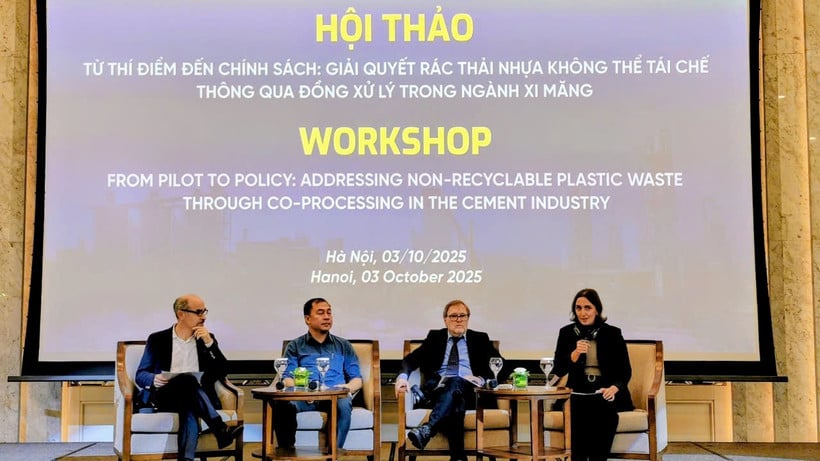
At the workshop “Piloting policy to solve plastic waste in cement production technology” on October 3, organized by SINTEF Research Institute (Norway) and the Norwegian Embassy in Vietnam in collaboration with the Vietnam Cement Association (VNCA), experts said that co-processing waste in cement production is the greenest and most effective solution today.
However, Vietnam still faces many difficulties in effectively implementing waste co-treatment solutions.
Biggest barriers: Policy, economics and supply chains
According to Associate Professor, Dr. Luong Duc Long, Vice President of the Vietnam Cement Association, the rate of alternative fuel use in the cement industry is currently only about 4%, while the national target is 15% by 2025. The main reason comes from many barriers.
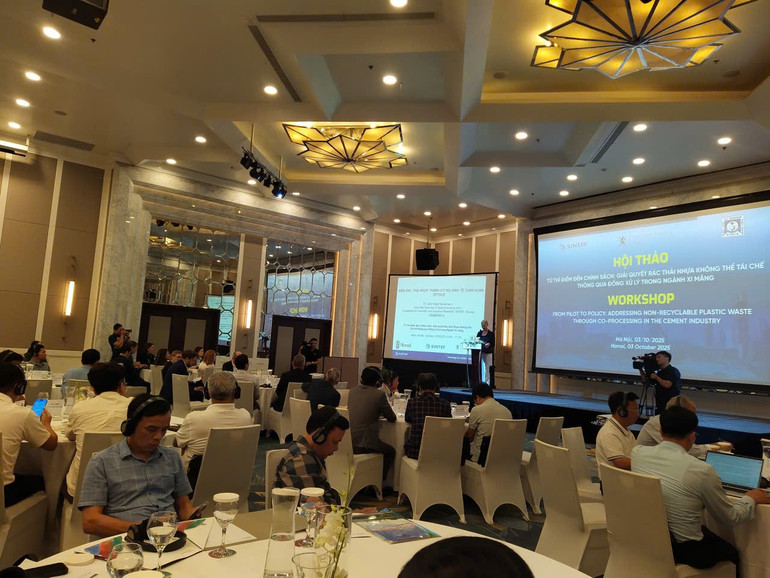
Firstly, in terms of policy and regulations, Vietnam does not yet have a mechanism for "equal treatment" between waste co-treatment and other treatment methods such as waste incineration for electricity generation.
“Administrative procedures are still complicated, typically requiring re-doing the Environmental Impact Assessment Report when using alternative fuels, causing cement production enterprises to waste a lot of time and money,” said Mr. Long.
Second, economically and financially, the lack of tipping fees is the biggest barrier. In Vietnam, waste disposal is virtually free, leading to waste being sent straight to landfills instead of being recycled.
Mr. Nguyen Quang Cung, Chairman of the Vietnam Cement Association, emphasized: “Without waste treatment fees, it is difficult for co-processing enterprises to make a profit. Meanwhile, in Europe, treatment fees are the main source of income, helping cement factories maintain sustainable operations.”
Third, in terms of supply chain and logistics, a stable waste source is a key condition for operating a kiln 24/7. However, in Vietnam, household waste often has a low calorific value of 1,000-2,000 kcal/kg, which does not meet the coal replacement standard of 6,000 kcal/kg.
According to Mr. Pham Van Dien, Director of the Hoa Binh High-Tech Environmental Research Institute, not all waste can be put into cement kilns. Household waste needs to be classified and processed into pellets from waste-derived fuel (RDF) with a calorific value of 5,000-7,000 kcal/kg.
However, the current source of waste is unstable, transportation costs are high and there is a lack of support mechanisms, making it difficult for businesses to expand their scale.
Experience from Norway and Europe
Norwegian experts attending the workshop said that waste co-processing in the cement industry can absolutely become a sustainable business if there are appropriate policies and financial mechanisms.
In Norway, for example, many cement plants have achieved fossil fuel substitution rates of over 75%, even up to 96%. This success is based on three main pillars: waste disposal fees, coal cost savings and carbon credits.
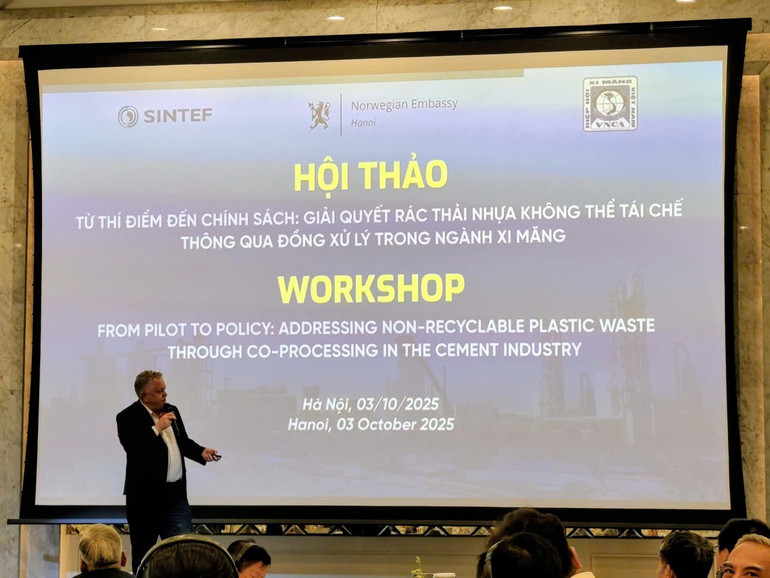
In which, waste treatment fee is most important source of income. When receiving waste, cement companies not only have alternative materials but also get paid for processing.
In Europe, these fees are very high, reaching thousands of dollars per ton for hazardous waste, creating a strong incentive for businesses to invest in co-processing.
In addition, using fuel from waste also helps significantly reduce the amount of coal consumed, which is a major cost in production.
By reducing carbon emissions, businesses can also participate in carbon markets, receiving credits to sell or offset their emissions.
“In Europe, waste treatment is considered a core service business, with cement production being a byproduct,” says Lars Petersen, a waste management expert in Norway. “It is the treatment fees and carbon mechanism that are the real profit base of the business.”
With synchronous policies and an effectively operating market, waste co-treatment not only helps reduce environmental pressure but also opens up a new economic sector. According to Norwegian experts, this is an important experience that Vietnam can refer to in the process of developing a circular economy.
Sustainable solutions for the future
To increase the rate of alternative fuels from the current 4% to 15% in cement production within the next two years, according to experts, Vietnam needs to focus on three main groups of solutions.
First, perfecting the policy by establishing a mechanism for equal treatment between co-processing and other processing methods.
Issue technical standards for waste-derived fuel (RDF) pellets, simplify administrative procedures, especially with Environmental Impact Assessment (EIA) reports when the cement industry wants to use alternative fuels.
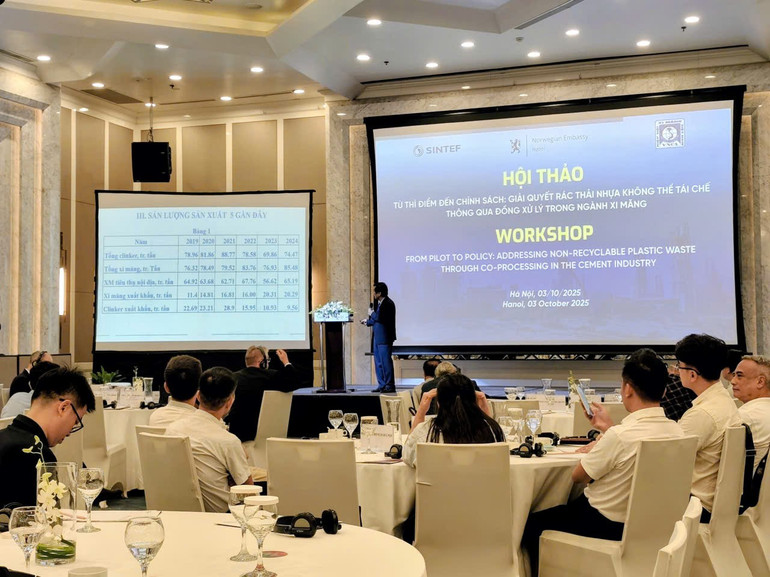
Second, it is necessary to create economic incentives through applying waste treatment fees, developing carbon markets, and providing capital and tax incentives to encourage businesses to expand.
Third, build a professional supply chain, form standard waste processing centers, ensure a stable, high-quality waste supply and reasonable logistics costs.
Mr. Nguyen Quang Cung, Chairman of the Vietnam Cement Association, affirmed: “If there is a proper support policy, waste co-treatment will both help reduce the environmental burden and contribute greatly to the goal of reducing greenhouse gas emissions and sustainable development of Vietnam in the future.”
Source: https://nhandan.vn/xi-mang-xanh-tu-rac-thai-giai-phap-ben-vung-can-chinh-sach-thuc-day-post912974.html




![[Photo] Prime Minister Pham Minh Chinh launched a peak emulation campaign to achieve achievements in celebration of the 14th National Party Congress](https://vphoto.vietnam.vn/thumb/1200x675/vietnam/resource/IMAGE/2025/10/5/8869ec5cdbc740f58fbf2ae73f065076)
![[Photo] Prime Minister Pham Minh Chinh chairs the Government's online conference with localities](https://vphoto.vietnam.vn/thumb/1200x675/vietnam/resource/IMAGE/2025/10/5/264793cfb4404c63a701d235ff43e1bd)


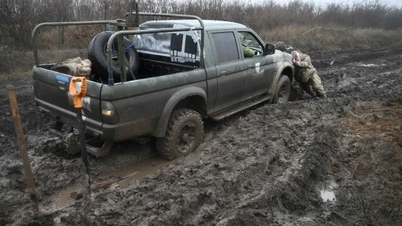

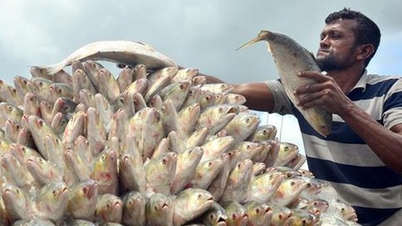




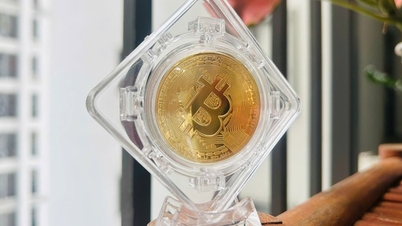





![[Video] Traditional moon cakes attract customers](https://vphoto.vietnam.vn/thumb/402x226/vietnam/resource/IMAGE/2025/10/5/0a98992e8c92419fa9ea507de23e365d)


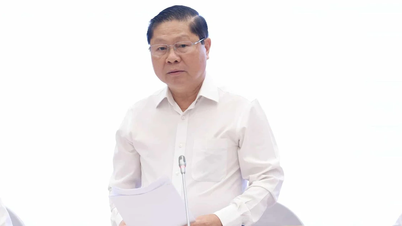
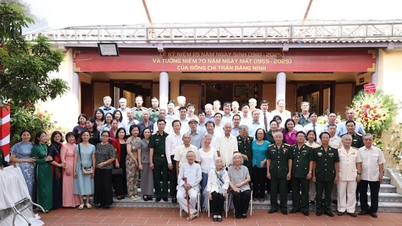



























![[VIDEO] Summary of Petrovietnam's 50th Anniversary Ceremony](https://vphoto.vietnam.vn/thumb/402x226/vietnam/resource/IMAGE/2025/10/4/abe133bdb8114793a16d4fe3e5bd0f12)

![[VIDEO] GENERAL SECRETARY TO LAM AWARDS PETROVIETNAM 8 GOLDEN WORDS: "PIONEER - EXCELLENT - SUSTAINABLE - GLOBAL"](https://vphoto.vietnam.vn/thumb/402x226/vietnam/resource/IMAGE/2025/7/23/c2fdb48863e846cfa9fb8e6ea9cf44e7)














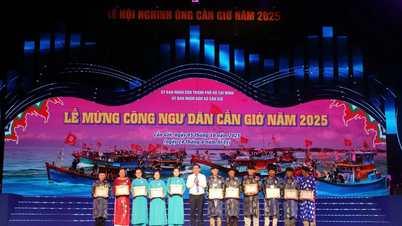
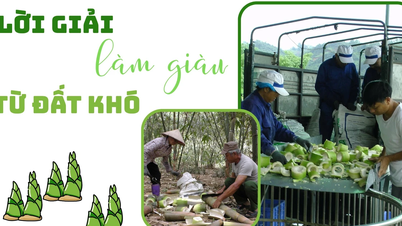

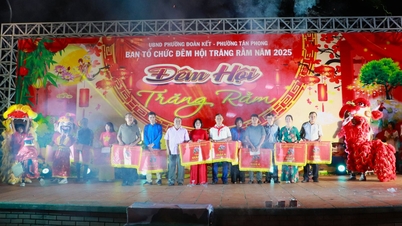


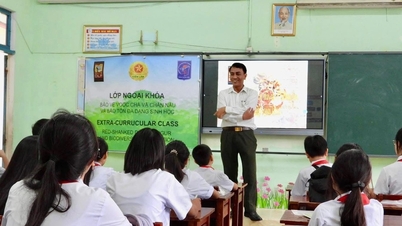














Comment (0)